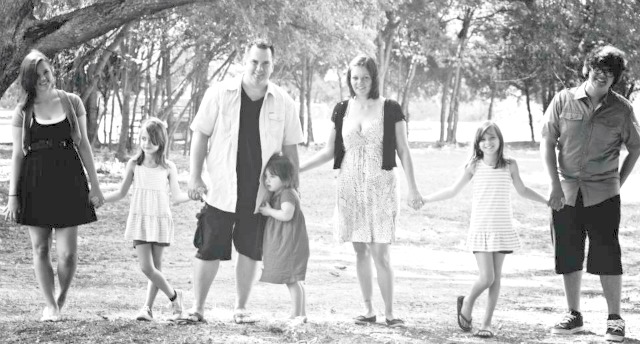The world for children today is different than the world we, their parents, grew up in. Just about everything is accessible and immediately. Kids have more stuff, more access, more entertainment, more stimulation, and more…well, everything. As parents it’s frustrating to watch our children have so much, yet not realize how fortunate they are. But is it our kids’ fault that they don’t understand this?
Instilling gratitude in our children starts with parents. Kids need context and guidance in order to truly become more appreciative of their people in their lives, the world they live in and, yes, the things they have. But how do you do this? Here are five strategies to get you started.

Helping Your Children Understand What Gratitude Is
Of course, gratitude is basically defined as thankfulness or appreciation. But Dr. Richard Emmons, a leading researcher on gratitude, explains it in a more and meaningful way in an article on Greater Good.
“It’s affirmation of goodness. We affirm that there are good things in the world, gifts and benefits we’ve received.” And, he says, “We recognize that the sources of this goodness are outside of ourselves. … We acknowledge that other people—or even higher powers, if you’re of a spiritual mindset—gave us many gifts, big and small, to help us achieve the goodness in our lives.”
That definition makes more sense. But how to explain that to a child?
Use the Formula of Three
Psychologist, father and co-author of Making Grateful Kids: The Science of Building Character, Jeffrey Froh, developed a formula to help kids learn to be appreciative.
He explains three key elements of a situation:
The intent: understanding that someone else put your child first.
The cost: what someone sacrificed or gave up for your child (either money or time).
The benefit: how your child benefitted.
Here’s a simple example: if someone bought your child a gift, the intent is: the gift giver was thinking about your child and wanted to buy her a gift. The cost is: the cost of the gift and the time spent picking it out. The benefit to your child is: the gift! This formula works for both simple and complex scenarios.
Start With the Basics
Once you’ve helped your child understand the circumstances in which they should practice gratitude, it’s time to help them understand all of the things in their lives that warrant it. First and foremost, kids need to learn to be grateful for the things many of us take for granted: enough food to eat, a warm bed, a roof over our heads, the opportunity to go to school every day, a family, friends and more.
These certainly aren’t things that every human has access to and are all things that fit into Dr. Froh’s formula. Never forget to reinforce to your child how fortunate he (and you!) are to have these basic needs covered.
Then Tackle the Rest
It’s funny how it seems that the more “things” kids get, the less they appreciate what they have. But is it any wonder? How can a child appreciate a fun toy when he knows there’s a bigger, shinier one coming his way when he wants it?
As a parent, adopt an attitude of moderation. Say no as often as you can. It’s interesting that gratitude seems to happen naturally once you deny your children everything they ask for. The more you say “no,” the more kids will appreciate when you say “yes.”
Give Them Experiences
It’s a lot easier for a child to appreciate the dinner you made when he understands the time and energy that goes into preparing a meal.
Find opportunities for your child to experience, first hand, the effort that goes into certain aspects of his life (the “cost” in Dr. Froh’s model). Assigning chores, for example, can help children appreciate the work you put into keeping a household running.
In the same vein, encouraging your child to save her money in order to purchase something she really wants can help her understand the value of material items.
Model Gratitude
Show gratitude yourself! It’s not only just children who can benefit from the “attitude of gratitude” and by demonstrating your own thankfulness you can make a big impact on your children. Use “thank you” often. Tell people you appreciate them and the things they do. Even refrain from buying the latest and greatest tech gadgets or other items for yourself and instead appreciate what you already have. Remember, your kids are watching.
Helping your child practice gratitude every day can only have positive benefits. In fact, in a study by Dr. Emmons, researchers found that practicing gratitude can boost a person’s happiness levels by nearly 25 percent. That certainly makes gratitude a concept we should all make a priority!
Sources:
Dr. Robert Emmons
http://greatergood.berkeley.edu/topic/gratitude/definition
Jeffrey Froh, co author of Making Grateful Kids: The Science of Building Character.
http://www.huffingtonpost.com/paula-spencer-scott/heres-how-to-raise-grateful-kids_b_8585742.html

